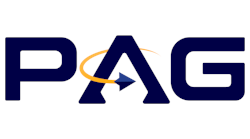In my 15-plus years in the parts and aftermarket industry, I’ve spent a lot of time talking with suppliers and component repair shops about virtually every aspect of the industry save one: risk management. It’s the one area our industry doesn’t seem to want to discuss.
Most people I meet in the aftermarket parts industry believe they do not need products liability insurance. In their view, they don’t have any exposure, since they are not the original manufacturer of the part. Unfortunately, this is not the case. In our litigious business climate, anyone in the aviation supply chain can be brought into a lawsuit should there be an occurrence with an aircraft for which they have had contact with any of the parts. If you become involved, the costs of litigation can destroy your company unless you have a plan to cover your assets.
For this reason alone, aftermarket companies need a risk management plan. Simply put, a risk management plan charts your course back to a pre-loss state should a disaster occur. You can choose one of three paths to plan for potential disasters like liability litigation:
• Avoidance: Simply avoid the risk. This would require you to stay out of the parts business altogether.
• Set aside capital: Put away enough money to pay for the costs of a disaster, be it litigation costs or the actual judgment. Given the cost of capital to sit undeployed, this is not a good option for most aftermarket companies.
• Transfer the risk: Purchase insurance to pay for covered litigation costs and judgments. You can also create contracts to shield you from liability by transferring the risk to a third party.
Natural and man-made disasters
Most companies purchase commercial insurance to protect from natural disasters such as fire, tornados, or floods. Companies design contracts, waivers, and other binding agreements to protect against administrative disasters such as employee injuries or termination. Similarly, your company must guard against the man-made disaster of liability litigation.
The most obvious benefit of insurance is that it covers the cost, and to a certain extent the bureaucracy, of being involved in a lawsuit. If you are involved in the chain of custody and have handled a part in any way, you are at risk of being brought into a lawsuit if an incident occurs involving that part. Getting yourself out of that lawsuit will be costly. Your insurance carrier, in most cases, will defend you in a lawsuit and if any judgment occurs against you, will pay the judgments as well up to your policy limits. Your legal defense is built into your policy, meaning the insurer hires and pays the lawyers and other associated costs of your defense, and manages the process. Legal fees do not reduce the amount of your coverage.
Liability insurance
Finally, we must examine the trend of industry leaders to require that all points in the supply chain carry insurance. Airlines and MROs are starting to mandate that their suppliers carry product liability insurance. As a result, you in turn must also examine your own vendor base and determine if you want to share the risk with your suppliers. If they do not have liability coverage, you may ultimately be liable for their actions in the event of litigation.
These realities of the potential for a liability disaster may not be pleasant to discuss, but like tornados, fires, or any other disasters, you must plan for the small but significant chance that a catastrophic loss could occur. And, as with any other disaster, planning is the key to not just surviving but thriving.
Jamie Benthusen is the director of aviation products liability for NationAir Aviation Insurance, one of the country’s oldest and largest aviation insurance specialty brokerages. Benthusen has more than 15 years’ experience in sales and manufacturing for airframe and engine products and test equipment.




